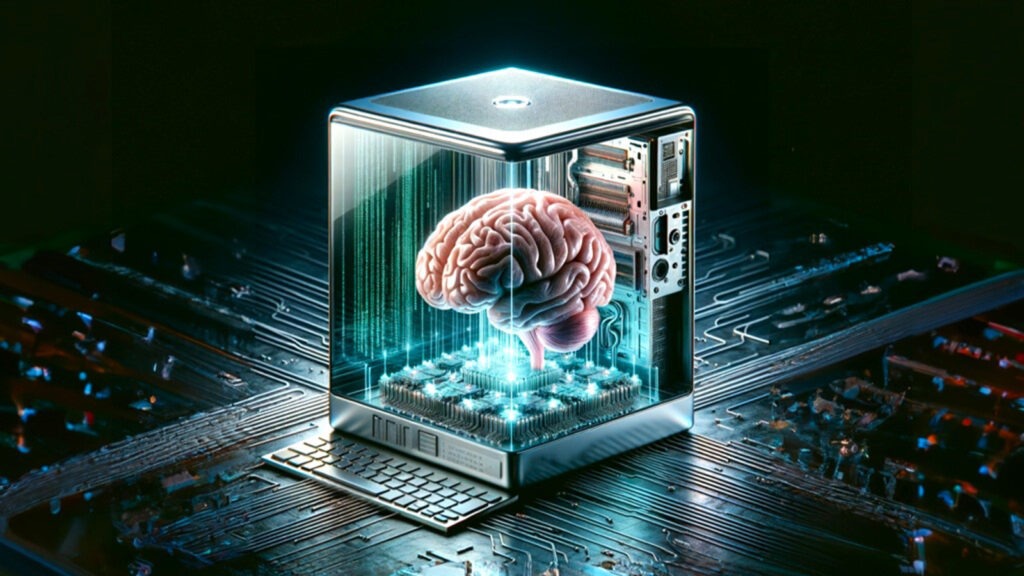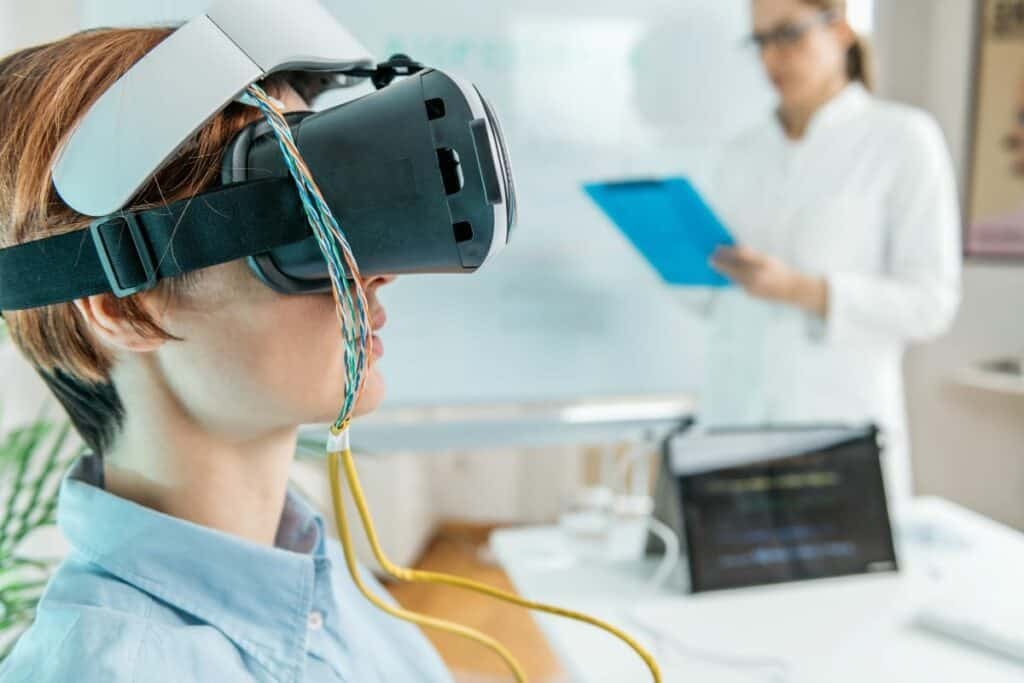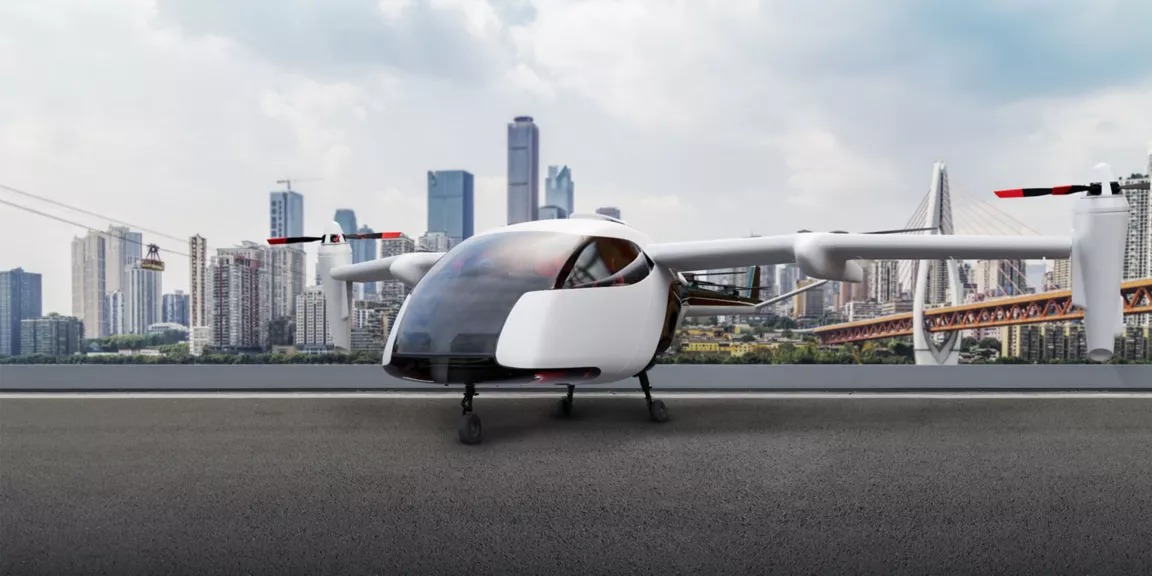
Brain-inspired (neuromorphic) hardware for mobile/robotic systems.
Neuromorphic, or brain-inspired, hardware mimics the human brain’s neural architecture to deliver energy-efficient, adaptive, and real-time intelligence. Ideal for mobile and robotic systems, it enables autonomous learning, ultra-fast perception, and low-power computation. By integrating memory and processing like neurons and synapses, neuromorphic chips empower drones, robots, and wearable devices to operate intelligently in dynamic, unpredictable environments.
✨ Raghav Jain

Introduction
The evolution of artificial intelligence (AI) and robotics has long been inspired by the human brain — the most energy-efficient and intelligent system known. As AI applications expand into autonomous drones, wearable devices, and mobile robots, traditional computing architectures face limitations in energy consumption, scalability, and adaptability. Enter neuromorphic computing, an emerging technology that seeks to replicate the structure and function of biological neural systems directly in hardware.
Neuromorphic systems combine insights from neuroscience, computer science, and electrical engineering to design hardware that processes information like neurons and synapses. Unlike traditional Von Neumann architectures, which separate memory and computation, neuromorphic hardware integrates them, enabling massive parallel processing and ultra-low-power computation.
For mobile and robotic systems, where energy efficiency and real-time learning are critical, brain-inspired hardware could be transformative. From autonomous drones that navigate without GPS to prosthetic limbs that learn user behavior, neuromorphic computing opens new frontiers in intelligent, adaptive, and energy-efficient machine behavior.
1. The Limitations of Conventional Computing in Robotics
Modern AI systems rely heavily on deep neural networks (DNNs) running on GPUs or cloud-based processors. While these models achieve remarkable accuracy, they are computationally and energy-intensive, requiring massive datasets and continuous connectivity.
For mobile and robotic platforms, this poses several challenges:
- Energy Constraints: Robots and drones operate on limited battery power. Running deep learning algorithms continuously drains energy quickly.
- Latency Issues: Cloud-based AI requires data transmission, introducing delays that are unacceptable for real-time navigation or reflexive motion.
- Hardware Bulk: GPUs and CPUs designed for AI processing are bulky, generating heat and unsuitable for small-scale or mobile robotics.
- Lack of Adaptability: Traditional AI models can’t learn or adapt on-device without retraining, limiting autonomy in unpredictable environments.
Neuromorphic hardware aims to solve these challenges by bringing brain-like computation directly to the edge — enabling robots to learn, reason, and react locally and efficiently.
2. What Is Neuromorphic Computing?
Neuromorphic computing is the design of hardware systems that emulate the neurons and synapses of the human brain. It’s built on the idea that intelligence emerges not just from software but from the architecture of the system itself.
A neuromorphic chip contains thousands or millions of artificial neurons connected by artificial synapses. These components communicate via spikes, or brief pulses of electrical activity, similar to biological action potentials.
Key principles include:
- Event-driven computation: Processing occurs only when spikes (events) happen, saving energy.
- Parallelism: Many neurons can process information simultaneously.
- On-chip learning: The system can adapt its synaptic weights locally, without cloud-based retraining.
- Memory-computation integration: Storage and processing occur in the same physical location, avoiding the bottlenecks of the Von Neumann architecture.
These traits allow neuromorphic chips to perform complex tasks, such as pattern recognition, sensor fusion, and motion planning, using just a fraction of the power required by conventional processors.
3. Leading Neuromorphic Hardware Platforms
Several major research initiatives and companies are pioneering neuromorphic hardware:
a. IBM TrueNorth
Developed by IBM, the TrueNorth chip contains 1 million neurons and 256 million synapses, consuming just 70 milliwatts — less than a typical smartphone chip. It excels in pattern recognition and sensory data processing, making it suitable for embedded robotic systems.
b. Intel Loihi
Intel’s Loihi chip features on-chip learning capabilities, supporting real-time adaptation. Robots using Loihi can adjust behaviors dynamically — for example, adapting to new terrain or recognizing changing visual inputs without retraining.
c. SpiNNaker
Developed at the University of Manchester, SpiNNaker (Spiking Neural Network Architecture) connects up to 1 million ARM processors in a massively parallel network. It has been used to simulate parts of the human brain and test complex robotic control algorithms.
d. BrainChip Akida
BrainChip’s Akida is a commercial neuromorphic processor optimized for edge devices. It supports continuous learning, making it ideal for smart sensors, drones, and autonomous vehicles that need real-time decision-making with minimal latency.
Each of these platforms demonstrates how neuromorphic hardware can deliver AI-level intelligence with biological efficiency, paving the way for mobile systems that think and adapt like living organisms.
4. Neuromorphic Processing for Mobile and Robotic Applications
Neuromorphic chips are especially advantageous in robotics and mobile systems due to their biologically inspired processing capabilities. Here are several domains where this hardware shows immense promise:
a. Vision and Perception
Traditional computer vision requires frame-based image processing, consuming huge bandwidth. Neuromorphic vision systems use event-based cameras (Dynamic Vision Sensors) that mimic the human retina.
These cameras send information only when changes occur in the visual scene — just like the eye focusing on movement. Combined with neuromorphic processors, they can achieve microsecond-level reaction times, enabling drones to dodge obstacles or robots to catch falling objects instinctively.
b. Sensor Fusion
Robotic systems often combine inputs from multiple sensors — cameras, lidar, microphones, and tactile sensors. Neuromorphic processors can integrate this data in real time, dynamically weighting sensory inputs to make context-aware decisions, much like the human brain balances sight and hearing.
c. Navigation and Motor Control
Neuromorphic systems excel at spatial mapping and motor coordination. For instance, a neuromorphic robot can navigate cluttered environments using minimal pre-programming, relying instead on emergent learning and sensory feedback loops.
d. Speech and Gesture Recognition
Brain-inspired hardware allows mobile assistants or humanoid robots to process natural communication cues locally — recognizing voice commands or gestures without needing cloud connectivity.
e. Edge Intelligence
Neuromorphic chips enable edge AI, where computation occurs directly on devices instead of distant servers. This is vital for autonomous systems in remote or unpredictable locations, where connectivity is limited.
5. Advantages of Brain-Inspired Hardware
- Ultra-Low Power Consumption:
- Neuromorphic systems consume milliwatts compared to the watts or kilowatts of conventional AI processors, making them ideal for mobile robots or wearable devices.
- Real-Time Processing:
- Event-driven design ensures immediate responses, essential for real-world robotics where split-second reactions matter.
- Scalability and Miniaturization:
- Compact chip designs allow deployment in drones, prosthetics, and micro-robots.
- Adaptive Learning:
- On-chip learning enables systems to evolve and personalize behavior — a crucial step toward autonomous intelligence.
- Robustness and Fault Tolerance:
- Like biological neurons, neuromorphic systems can continue functioning even if some units fail, ensuring high resilience.
6. Real-World Examples and Research
- Intel’s Loihi Robot Project: Researchers built a robotic arm using Loihi that could learn to balance objects and adjust its grip without external programming.
- BrainChip Akida in Autonomous Drones: Used in drone navigation to process sensory input and maintain stability in turbulent conditions.
- SpiNNaker Simulations: Tested on mobile robots to mimic insect-like navigation systems for energy-efficient pathfinding.
- DARPA’s SyNAPSE Program: Focused on developing brain-like chips that can handle complex battlefield data with minimal latency.
These examples highlight how neuromorphic hardware is already transitioning from labs to field applications, transforming how robots learn and interact with their environments.
7. Challenges and Limitations
Despite its potential, neuromorphic computing faces several technical and practical challenges:
- Programming Complexity:
- Developing algorithms for spiking neural networks requires new paradigms beyond standard machine learning.
- Lack of Standardization:
- Different neuromorphic chips use different architectures, making software interoperability difficult.
- Limited Ecosystem:
- The toolsets and frameworks for neuromorphic hardware are still developing compared to mature AI ecosystems like TensorFlow or PyTorch.
- Data Representation:
- Converting conventional datasets into spike-based formats is complex and requires novel encoding strategies.
- Scalability to General AI:
- While neuromorphic systems are efficient for specific tasks, achieving human-like general intelligence remains a long-term goal.
8. The Future of Neuromorphic Robotics
The coming decade is expected to see neuromorphic hardware integrated into a wide range of intelligent systems. Future mobile and robotic applications may include:
- Self-learning household robots that adapt to user preferences and environments.
- Bio-inspired drones capable of navigating forests or caves autonomously.
- Smart prosthetics that provide real-time tactile feedback and adjust motion patterns dynamically.
- Energy-efficient autonomous vehicles with enhanced perception and decision-making at the edge.
- Swarm robotics, where hundreds of micro-robots cooperate using distributed neuromorphic intelligence.
As fabrication technology advances, neuromorphic chips may become standard components in edge AI devices, bridging the gap between artificial intelligence and biological cognition.
Neuromorphic or brain-inspired hardware represents one of the most revolutionary frontiers in computing — an attempt to replicate the structure and function of the human brain within silicon-based systems to achieve adaptive, energy-efficient, and real-time intelligence. As artificial intelligence continues to shape our daily lives through smart devices, autonomous robots, and mobile systems, traditional computing architectures such as the Von Neumann model are struggling to keep pace with the growing demands of low-power, low-latency, and context-aware processing. In contrast, neuromorphic computing aims to bridge this gap by mimicking the brain’s neural architecture, in which computation and memory are intertwined, enabling massively parallel and event-driven data processing. For mobile and robotic systems — where every milliwatt of power and every millisecond of latency counts — this approach could redefine how machines sense, interpret, and interact with the physical world. Conventional AI models that run on GPUs or cloud servers demand enormous amounts of power and data bandwidth. These systems operate through sequential data transfers between memory and processing units, creating a bottleneck known as the “Von Neumann bottleneck.” In contrast, neuromorphic chips such as Intel’s Loihi, IBM’s TrueNorth, SpiNNaker, and BrainChip’s Akida integrate memory and computation on the same chip, much like neurons and synapses in the brain. These processors communicate using electrical spikes — discrete events — rather than continuous signals, ensuring that computation occurs only when necessary, dramatically reducing energy consumption. The result is a class of intelligent machines that can learn, adapt, and operate autonomously, without requiring constant cloud connectivity. For example, a neuromorphic chip embedded in a drone could enable real-time obstacle avoidance, adaptive flight control, and autonomous navigation in complex terrains while consuming a fraction of the energy used by conventional AI systems. Similarly, neuromorphic prosthetic limbs could adapt to a user’s muscle patterns and provide natural, responsive movement. These systems are capable of on-chip learning, meaning they can modify synaptic weights locally, allowing continuous adaptation in dynamic environments — a fundamental leap beyond static AI models that require retraining on external servers. The concept of event-driven processing also aligns perfectly with how sensory data is generated in real life. In nature, our eyes, ears, and skin don’t constantly transmit information; they react to change. Neuromorphic systems adopt the same principle using event-based sensors such as Dynamic Vision Sensors (DVS), which detect motion or light intensity changes instead of capturing entire frames. This allows for microsecond-level response times and makes robotic vision systems incredibly efficient. Imagine an autonomous car that reacts instantly to a pedestrian’s movement or a surveillance drone that detects anomalies in real time without streaming gigabytes of data to the cloud — that’s the kind of transformation neuromorphic computing promises. The applications extend far beyond robotics and drones. In mobile devices, neuromorphic chips could support advanced on-device AI, such as speech recognition, gesture control, and biometric security, without compromising battery life or requiring an internet connection. In industrial automation, neuromorphic control systems could coordinate robotic arms and sensors in real-time production environments, detecting faults and optimizing operations autonomously. Researchers at institutions like MIT, Stanford, and the University of Manchester are already experimenting with neuromorphic architectures to simulate aspects of human cognition, learning, and perception. Intel’s Loihi chip, for instance, has been demonstrated in robotic arms that can learn balance and grip through feedback loops, while BrainChip’s Akida processor has been used to enhance autonomous drone navigation under uncertain conditions. Moreover, neuromorphic computing holds potential for swarm robotics — networks of small robots that coordinate collectively, similar to insect colonies, to achieve complex tasks like search and rescue or environmental monitoring. These systems require local decision-making and distributed intelligence, both of which neuromorphic architectures provide naturally. However, despite its promise, the field faces challenges that must be overcome before widespread adoption. One major hurdle is the lack of standardized tools and programming frameworks. While traditional AI development benefits from mature ecosystems like TensorFlow and PyTorch, neuromorphic programming requires understanding spiking neural networks (SNNs), which function differently from conventional deep neural networks (DNNs). Data representation is another issue; converting traditional datasets into spike-based signals is nontrivial and often requires novel encoding strategies. Furthermore, neuromorphic hardware from different manufacturers often lacks interoperability, creating fragmentation in the ecosystem. Nevertheless, progress is accelerating as governments, academic institutions, and industry leaders invest heavily in research. DARPA’s SyNAPSE program, for example, has been a cornerstone in developing large-scale neuromorphic architectures that simulate millions of neurons and billions of synapses. In Europe, the Human Brain Project and SpiNNaker initiative are exploring how these systems can model cognition and support adaptive robotic control. As semiconductor fabrication advances toward nanometer and even neuromorphic-memristor-based designs, the miniaturization and scalability of such chips are expected to improve dramatically. Looking ahead, neuromorphic hardware could become integral to the next generation of edge AI — powering everything from self-driving cars and wearable devices to humanoid robots capable of emotional and contextual understanding. The ultimate vision is to create machines that don’t just follow programmed logic but exhibit emergent intelligence — the ability to learn, self-organize, and reason much like biological organisms. Such systems could operate efficiently in power-constrained environments like space exploration, underwater robotics, or battlefield drones, where traditional processors fail due to energy or latency constraints. Moreover, the integration of neuromorphic chips with quantum computing and biohybrid systems could further extend the boundaries of machine intelligence. In summary, neuromorphic hardware is more than just an engineering innovation — it’s a philosophical shift in how we approach computation itself. By emulating the energy efficiency, adaptability, and resilience of the human brain, these systems promise to unlock a new era of intelligent robotics and mobile devices that think, learn, and evolve autonomously. While challenges in programming, standardization, and commercialization remain, the ongoing convergence of neuroscience and technology offers a glimpse into a future where machines don’t just compute — they comprehend.
Neuromorphic computing, often described as brain-inspired hardware, represents a revolutionary paradigm in the field of artificial intelligence and robotics, aiming to replicate the highly efficient, parallel, and adaptive computational architecture of the human brain, which has evolved over millions of years to process vast amounts of sensory and cognitive information with remarkable energy efficiency, an ability that conventional digital computing systems struggle to match, particularly when deployed in mobile and robotic systems where constraints on energy, latency, and processing power are critical; traditional computing architectures, based on the Von Neumann model, rely on the separation of memory and processing units, causing the so-called Von Neumann bottleneck, which results in high energy consumption, increased latency, and reduced scalability, especially when handling complex AI tasks such as deep learning, sensor fusion, real-time perception, and adaptive control, all of which are essential for autonomous robots, drones, and other mobile platforms that need to operate reliably in dynamic, unpredictable, and sometimes remote environments; in contrast, neuromorphic hardware integrates memory and computation at the circuit level, mimicking neurons and synapses, which allows event-driven processing, meaning that computation occurs only in response to spikes or discrete events, much like the human brain processes information selectively, which dramatically reduces power consumption while enabling real-time responsiveness, a feature particularly valuable for robotic systems navigating complex terrain, interacting with humans, or performing fine-motor tasks; neuromorphic chips such as IBM TrueNorth, Intel Loihi, SpiNNaker, and BrainChip Akida have demonstrated that millions of artificial neurons and hundreds of millions of synapses can be simulated on a single chip while consuming mere milliwatts of power compared to the hundreds of watts required by conventional GPU-based systems, making these platforms ideal for mobile applications where battery life is limited; beyond energy efficiency, neuromorphic systems are capable of on-chip learning, meaning they can adapt their synaptic weights and network behaviors locally, without the need to constantly retrain models on distant servers, allowing robots to develop contextual intelligence, adapt to environmental changes, and personalize responses based on experience, which is critical for autonomous exploration, adaptive navigation, and human-robot interaction; one of the most promising applications of neuromorphic computing in robotics is vision and perception, particularly through the integration of event-based cameras, or dynamic vision sensors, which emulate the human retina by detecting only changes in the visual field, generating asynchronous spikes instead of continuous image frames, thereby reducing data redundancy and enabling microsecond-level response times; this allows autonomous drones to dodge obstacles in real time, mobile robots to grasp and manipulate objects adaptively, and surveillance or industrial systems to react instantly to environmental changes without relying on cloud processing or high-bandwidth data transmission; neuromorphic hardware also excels in sensor fusion, where inputs from multiple modalities — such as cameras, lidar, microphones, tactile sensors, and inertial measurement units — are integrated simultaneously to create a coherent understanding of the environment, enabling mobile systems to make context-aware decisions, balance competing sensory cues, and maintain stability in unpredictable conditions, which is vital for tasks ranging from robotic surgery to disaster response and autonomous logistics; in addition to perception, neuromorphic systems enhance motor control and navigation by implementing bio-inspired control loops and spiking neural network architectures, allowing robots to perform smooth, coordinated movements, learn optimal trajectories, and respond reflexively to unexpected disturbances, effectively replicating the adaptive motor learning observed in animals and humans; this capability is further extended in swarm robotics, where hundreds of small robots communicate locally and collectively exhibit complex emergent behaviors, coordinating efficiently without central control, a feat achievable due to the parallel and distributed nature of neuromorphic computation, which contrasts sharply with traditional AI systems that require centralized processing and continuous communication; despite these advantages, neuromorphic computing faces significant challenges, including the complexity of programming spiking neural networks, the lack of standardized development frameworks, and the need for new algorithms specifically designed for event-driven architectures, which differ fundamentally from conventional deep neural networks trained using backpropagation and gradient descent; moreover, converting traditional datasets into spike-based encodings is non-trivial, often requiring novel preprocessing strategies, and interoperability among different neuromorphic platforms remains limited, slowing widespread adoption; nevertheless, research programs such as DARPA’s SyNAPSE initiative, Europe’s Human Brain Project, and academic work at institutions like MIT, Stanford, and the University of Manchester are rapidly advancing the field, exploring both hardware innovations and software frameworks to enable scalable, efficient, and adaptive neuromorphic intelligence; commercial applications are already emerging, from drones that autonomously navigate complex forests and urban environments using BrainChip Akida processors to robotic arms equipped with Intel Loihi that learn dexterous manipulation through real-time feedback, demonstrating the potential of these systems to revolutionize industries including autonomous vehicles, defense, healthcare, industrial automation, and personal robotics; additionally, the convergence of neuromorphic computing with other emerging technologies such as memristors, quantum computing, and biohybrid systems promises to further extend computational capabilities, enabling machines that do not simply follow pre-programmed rules but develop emergent intelligence, adaptively self-organize, and exhibit learning behaviors that approach biological cognition; in summary, brain-inspired neuromorphic hardware represents a profound shift in how intelligence is embedded in machines, offering ultra-low-power, high-speed, and adaptive computation that is particularly suited for mobile and robotic systems requiring autonomous, real-time decision-making in energy-constrained environments; while challenges in standardization, software development, and scalability remain, the progress achieved by leading platforms and research initiatives demonstrates a clear trajectory toward highly intelligent, self-learning, and resilient mobile systems capable of performing complex tasks autonomously, bridging the gap between artificial and natural intelligence, and heralding a new era of robotics and AI where machines truly think, learn, and adapt like living organisms.
Conclusion
Neuromorphic computing represents a paradigm shift in how machines process information. By emulating the parallel, adaptive, and energy-efficient architecture of the human brain, neuromorphic hardware brings intelligence directly to mobile and robotic systems.
Unlike traditional computing architectures, neuromorphic chips can process sensory data locally, learn from experience, and respond in real time — all while consuming minimal power. This makes them ideal for next-generation autonomous systems that must function reliably in unpredictable environments.
However, challenges remain in programming, standardization, and hardware scalability. As interdisciplinary research continues, neuromorphic hardware is poised to revolutionize AI by making it more human-like, efficient, and sustainable — paving the way for intelligent machines that truly think at the edge.
Q&A Section
Q1: What is neuromorphic computing?
Ans: Neuromorphic computing is a brain-inspired approach to hardware design that mimics the structure and function of biological neurons and synapses, enabling energy-efficient, adaptive, and parallel information processing.
Q2: Why is neuromorphic hardware important for robotics?
Ans: It allows robots to process sensory data, learn, and react in real time while consuming minimal power, making it ideal for autonomous systems that need on-device intelligence without constant cloud connectivity.
Q3: How does neuromorphic hardware differ from traditional AI processors?
Ans: Traditional processors separate memory and computation, consuming more energy and time. Neuromorphic hardware integrates both, uses event-driven computation, and learns dynamically through spiking neural networks.
Q4: What are some leading neuromorphic chips?
Ans: Notable examples include IBM’s TrueNorth, Intel’s Loihi, SpiNNaker, and BrainChip’s Akida, each designed to perform intelligent computations efficiently at the edge.
Q5: What are the main challenges facing neuromorphic systems?
Ans: Challenges include programming complexity, lack of standard tools, data encoding for spiking models, and difficulties scaling systems for general AI applications.
Similar Articles
Find more relatable content in similar Articles

Virtual Reality Therapy: Heali..
Virtual Reality Therapy (VRT) .. Read More

E-Waste Crisis: The Race to Bu..
The rapid growth of electronic.. Read More

3D-Printed Organs: Are We Clos..
3D-printed organs are at the f.. Read More

The Future of Electric Planes ..
The aviation industry is under.. Read More
Explore Other Categories
Explore many different categories of articles ranging from Gadgets to Security
Smart Devices, Gear & Innovations
Discover in-depth reviews, hands-on experiences, and expert insights on the newest gadgets—from smartphones to smartwatches, headphones, wearables, and everything in between. Stay ahead with the latest in tech gear
Apps That Power Your World
Explore essential mobile and desktop applications across all platforms. From productivity boosters to creative tools, we cover updates, recommendations, and how-tos to make your digital life easier and more efficient.
Tomorrow's Technology, Today's Insights
Dive into the world of emerging technologies, AI breakthroughs, space tech, robotics, and innovations shaping the future. Stay informed on what's next in the evolution of science and technology.
Protecting You in a Digital Age
Learn how to secure your data, protect your privacy, and understand the latest in online threats. We break down complex cybersecurity topics into practical advice for everyday users and professionals alike.
© 2025 Copyrights by rTechnology. All Rights Reserved.